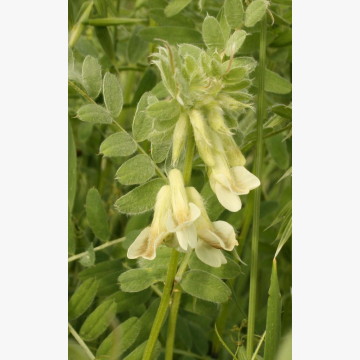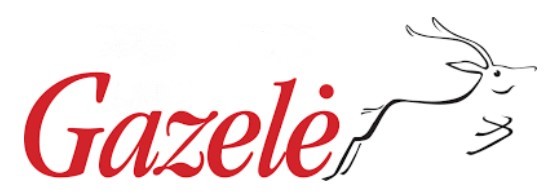- Home
- Seeds
- Catch/Cover crops
- Plants for catch/cover crops
- Hungarian vetch BETA
FOR CONSULTATIONS APPLY TO:
Commercial director
Lina Smalskienė
tel. +370 618 02 551
e-mail linak@agrolitpa.lt
Sales manager
Tautvydas Kliučininkas
tel. +370 681 35 093
e-mail tautvydask@agrolitpa.lt
Sales manager
Eglė Petkevičienė
tel. +370 626 95 458
e-mail eglep@agrolitpa.lt
Sales manager
Kotryna Nakrošytė
tel.: +370 601 39 282
e-mail kotryna@agrolitpa.lt
Products
An early/mid early vetch with good yields, good taste and good dietary effect
- Excellent and valuable fodder crop
- Could be used either for hay or green fodder
- Harvested yield can be up to 30 t/ha
- Could be grown with autumnal or spring cereals
- This vetch variety is one of the earliest green forage sowed, thus it allows any kind of second crop after
- Its stem is fleshy, relatively solid, poorly hairy, 80-120 cm in length
- The flowers are white with brown streaks
- Seeds are dark grey in colour with black spots, slightly pressed in shape
- Thousand seed weight is about 40 g
- Excellent forage plants grown in mixtures
- Similar to hairy vetch in their characteristics and cultivation
- Harvest potential – up to 25-30 t/ha of green mass
- Harvested green yield (one sowing) can be up to 35-37 t/ha
- Vegetation period is 250-280 days (in Hungary)
- Stems – light purple, fleshy, quite strong, little hairy, 80-120 (90-100) cm long
- Good stem to leaf ratio
- Winter hardiness – good
- Resistant to frost
- Resistant to environmental effects (cold and drought)
- Resistance to diseases – good
- Flowers – white, sometimes pale brownish
- Seeds – dark grey with black spots, slightly flattened
- Average seed yield is 0.6-1.0 t/ha if grown with supporting plant, and can be 1.0-2.0 t/ha without it
- 1000 grains weight – 40 g
- Green mass is used to make hay, green fodder or silage, hay in wrapped bales
- Can be used as green fodder or for haylage, silage
- Good feed value
- Due to its high protein content, it could be the first green fodder in the spring
- Winter vetches have more protein than summer vetches
- Early fodder in spring may be available when growing with winter cereals
- Sown together with forage triticale or winter wheat
- Easily adapts to the soil, characterized by very low demand for soil
- Earlier than other vetches
- Winter vetches can be grown as summer cover crops by sowing them in late July-early August, and the green crop can be harvested until frost
- Winter vetches can be one of the most promising intermediate plants, because after harvest of the green mass in the spring, you can have time to sow summer cereals, buckwheat, and plant potatoes
- Enriches the soil with nitrogen
In Lithuania, Hungarian vetches can be sown in the spring for fodder in a mixture with oats, because they produce a large (bigger than the sown summer vetches) protein yield in green mass.
The varietal parameters may differ from those indicated here when the testing circumstances differ from quondam
Recommended sowing rate when growing for seeds: 60 kg/ha of vetch and 120 kg/ha of rye
Recommended sowing rate when growing for green fodder: 50-60 kg/ha of vetch and 80 kg/ha rye
In mixtures with oats – 100 kg/ha of vetch and 70-100 kg/ha oats
Sowing depth – 3 cm, interrow spacing – 12.5 cm
Keravos sreet. 17, Kerava,
LT-38 131 Panevėžys district, LITHUANIA
Enterprise's code 168598128
VAT code LT685981219
Tel. +370 615 11 315
E. mail info@agrolitpa.lt




.JPG)

